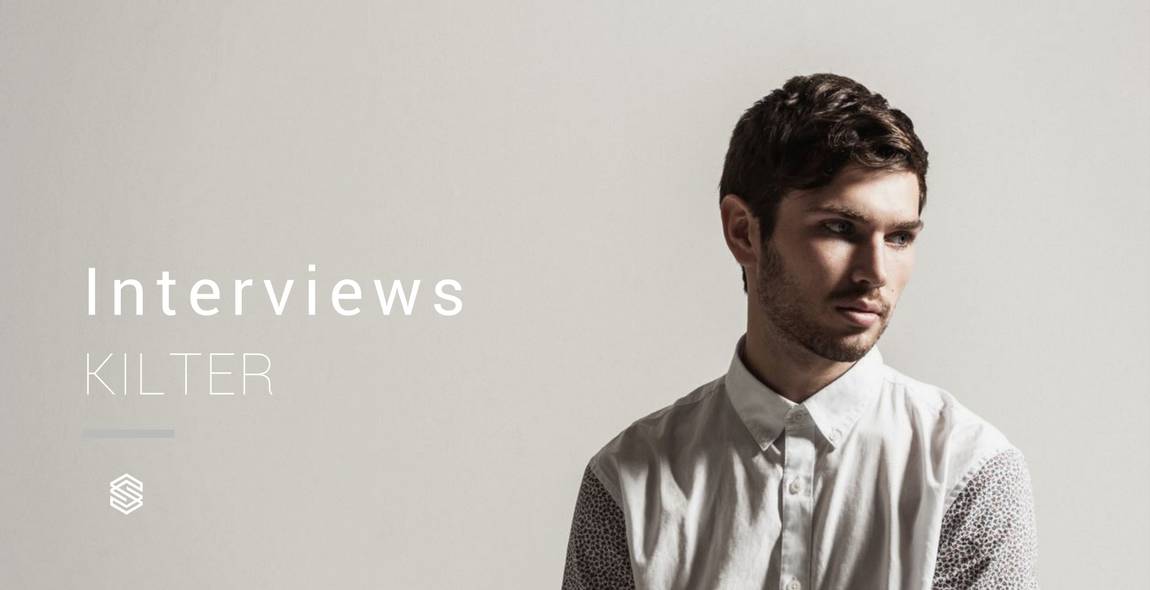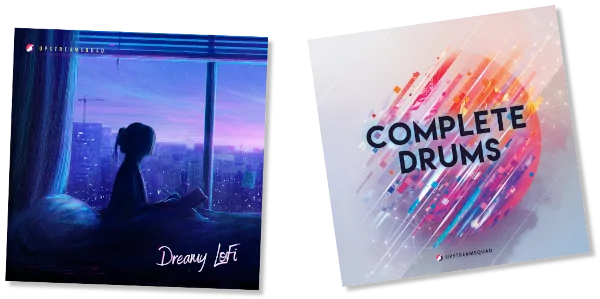Impeccable drum work, catchy vocals, spacey synths, and a dynamic blend of live instrumentation put Aussie producer, KILTER, in a league of his own. His eclectic electronic productions contain influences across the spectrum from genres such as Dancehall, Garage, Hip-Hop, RnB, Big Beat, and Breakbeat. Gearing up for his first studio album, “Through The Distortion,” Kilter is set to take over the electronic music scene and will embark on the highly anticipated album tour at the end of the month in Australia. Join us as we take a peek inside his production process!
SoundShock: What made you want to start making music and get into production?
Towards the end of high school I started making mixtapes mostly of fidgety electro and “pre-brostep” dubstep tunes for friends and house parties. This was back in 2008 and I had only just discovered dance music. I wanted to make my own tunes to put in these mixes so I entered a remix competition for a Kuduro artist Figura. I definitely did not win, but it started me on the path to making my own original music.
How did you come up with your artist name?
There actually isn’t too much of a story behind this. Off-kilter is something that is unconventional or unbalanced. Kilter is the opposite.
You have a very unique and diverse tracks in your latest album. What were some of your main influences for the album and why did you decide now was the time to release one?
Thank you! I felt that I had grown to a certain place as an artist where I could write a broader spectrum of styles while still sounding very much like myself. This is something that only an album lets you explore fully, with lots of different ideas complimenting each other as a body of work as opposed to a single release.
As far as influences go I found myself drawn back to some classic acts such as Basement Jaxx and Fatboy Slim, people that I listened to a lot growing up. As well as artists who are creating unique and forward thinking electronic music today like Mura Masa and Karma Kid.
The drum sample selection, processing, and mixing is spot on! How do you go about choosing the samples that complement each other and don’t sound out of place, and how do you go about processing these individual hits and the drum group so they punch through the mix and create the biggest impact possible for the listener?
I actually think the way I approach my drums is what led me to refining my overall sound for the record. Instead of using one shots, I actually cut up most of the percussion sounds out of vinyl samples and drum breaks. Working with vinyl samples instead of clean, studio processed hits allowed me to discover nuances around each hit (example: a ghost note leading into the snare or a bit of crackle) that would influence my programming and the aesthetics of the drums. At some points I would almost blindly chop up drums based on what I could see in the waveform rather than the sound itself. This helped me find grooves that I might not have thought about when programming by ear.
I would then layer cleaner kicks or snares on top of those grooves and massage their relation to each other using EQs to ensure they cut through and had presence. I didn’t really have any process as far as sound selection went other than what sounded good to me at the time.
A lot of your tracks contain tiny little melodies that decorate the track beautifully. How do you go about choosing the appropriate sounds for these little melodies, how do you write these melodies, and how do you decide where to place them in the track so they add to the overall track rather than confuse the listener?
It’s hard to know when enough is enough as far adding more elements. I find it helpful to understand what the main melodic element of the song is and what parts make up the counter melodies and decorations. Too many variations on the main theme will confuse and distract the listener, but the counter melodies are often just as important to keep the song moving forwards. I often would produce those secondary parts to sit in deeper in the mix. For example, the steel drum melody in “I Hear You” at 1:53 and 3:05 felt so good I wanted to use it more, but having it in just two moments makes it more special and it becomes something that you look forward to later in the song.
“Instead of using one shots, I cut up most of the percussion out of vinyl samples and drum breaks. Working with vinyl samples instead of clean, studio processed hits allowed me to discover nuances around the each hit.”KILTER
Almost all of your tracks contain vocals. How do you go about processing them and mixing them in so they take center stage in the mix?
Vocal processing is something that I am still learning about myself. Most of the songs were recorded remotely by the vocalist in their own studio with the exception of “Running Away” and “Hold Tight,” which I recorded myself. Once I had comped the different takes to create a collage of the best performance I would tune each part using Melodyne and process them using Waves CLA Vocals plugin for compression and light eqing. I also experimented a lot with distorting and overdriving vocal parts and layering them into the lead vocal to create grittier textures and warmth. At this point I have to give a shout out to Andrei Eremin who mixed and mastered the album. He did an excellent job cleaning up my mess.
Speaking more about the vocals, tell us about the collaborative process that goes on with the vocalist? Do you send vocalists ideas and then you guys go back and forth? How do you make sure you are both on the same page creatively and stay with the theme and emotion that you have going in your song?
Before writing this album I would normally send instrumentals to people and work back and forth online. However, I found that nothing really beats being in the room with the vocalist and being able to bounce off each other in person. A lot of the tracks on the album were written in this way in just one day. When writing remotely I find it best to try to explain the theme or emotion in each song through words or images. I don’t like to be too overbearing as it is important that the vocalist is representing themselves through the collaboration as well.
For many it is easy to lose momentum and over listen to tracks when producing, resulting in unfinished tracks that never see the light of day. How do you keep the momentum, creativity, focus, and excitement of producing going throughout the process and finish the ideas that you start?
After spending the better part of a year working on demos and not actually finishing them off, I remember thinking that writing an album wasn’t too hard. My label and I then went through everything and decided on a final track list. It was at this point that the process got difficult. I found that after listening to the songs in demo for so long, I would struggle to see what needed to happen to them to get them to the finish line. Apparently this is pretty common thing for artists. For me personally, the only way to push through this was just to work and work. One important thing I did learn is that you can get stuck at this 95% mark forever. When this happens, I feel the best thing to do is to put the song away for a few days and come back to it with fresh ears.
Many of the songs on your new album have timbral interesting and groovy baselines. How do you go about writing these baselines and sound designing them?
I rely quite heavily on a simple sine wave sub bass to fill the low end of my tracks out. This is generally quite unobtrusive sonically which allows me to experiment and create weirder textured sounds to add colour. Sometimes I would sample sounds. The bass part in the verses of “Count On Me” is a heavily distorted upright bass sample that I chopped up. Other times I record from synths. In “Shut It Down” the main bass sound is from a Sub Phatty. One sound in particular which I used across the record (most noticeably in Waste Time and I Hear You) would sound unrecognizable without the stack of processing I put on it mostly thanks to iZotope Trash.
With the massive amount of music that is out there right now it can be difficult to get your music heard. Any tips for producers looking to get their music out there and stand out from the crowd? Are there any specific social media tips or networking tips?
Sometimes it can seems that having a strong social media presence is more important than the actual music you are making. Unfortunately this is just how things are at the moment with such a saturation of content across all social media platforms. Aside from the obvious suggestion of creating content that is relatable and interesting to your fans, I would say work hard on the things that set you apart from other artists and never forgot how valuable the people who are already listening to you are.
Electronic producers have a hard time with music theory. Either they don’t know what to learn or how exactly to apply the theory. If you use theory when writing your tracks, what specific parts do you use and what would you topics do you feel producers should know?
It’s easy for producers of electronic music to dismiss music theory in favor of becoming a better engineer or learning other technical skills. Some people rely on midi tricks and trial an error to make up for the theory they do not know. This might work to some degree, but is really limiting the potential of what they can write.
It’s hard to say which parts of musical theory to ignore in order to focus on others because everything is so closely linked. You can’t learn chord theory without first learning about pitch and harmony. You can’t learn why a certain note will give a chord it’s color or why certain melodies create tension while others resolve without first knowing your scales. There are plenty of online courses or YouTube videos that will walk you through the fundamentals of music theory. People just need to commit to learning rather than continuing to cut corners.
With an impressive debut album now under your belt and tour dates set, what’s in the near future for KILTER?Also, what can we expect at your upcoming album release shows? Any special guests? Have a new live setup that your unveiling for the tour?
I’ve just spent the last month on the road in the States which was a bit of a mental reset after finishing the album. I can’t wait to get back over there, but I am even more excited to get in front of an Aussie crowd again soon.
The album tour will certainly have different guests popping up in each city and will feature a brand new lighting show which we are working on right now!





